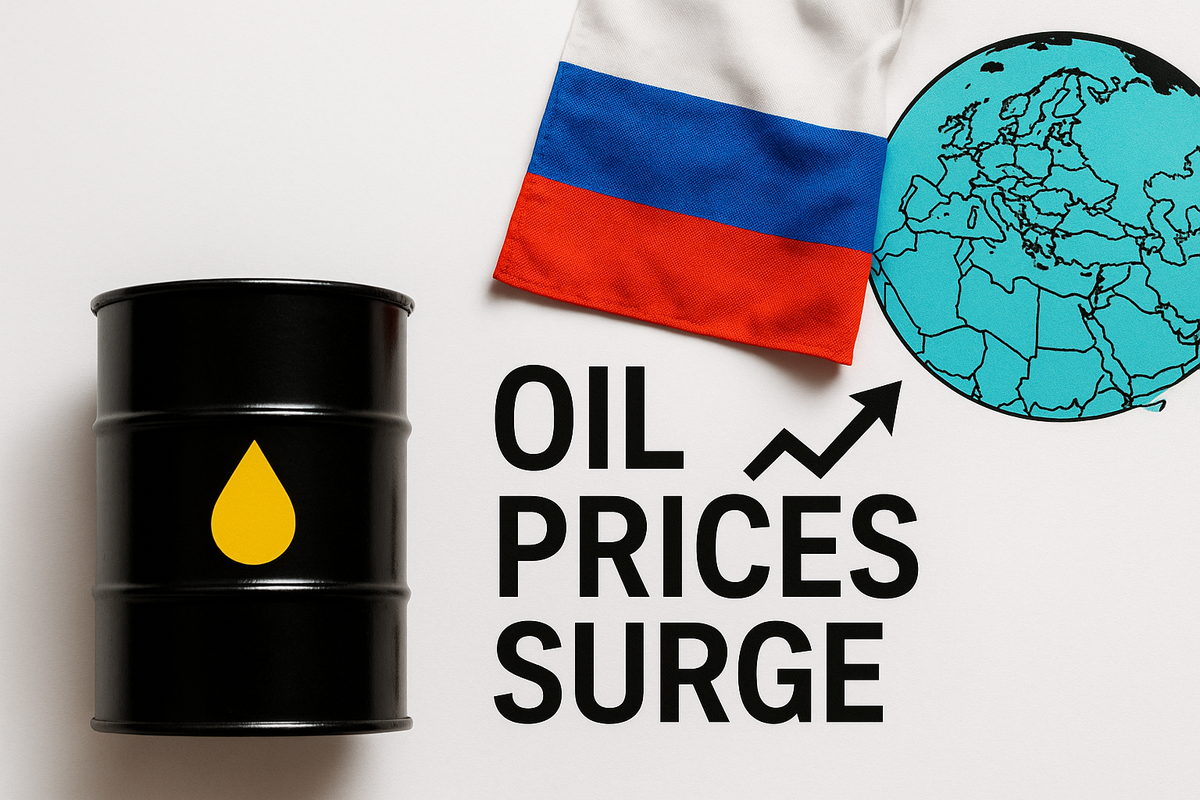Oil prices have surged recently, with Brent crude increasing by over 6% and West Texas Intermediate (WTI) rising by approximately 3% following new sanctions imposed by the U.S. on major Russian oil producers, Lukoil and Rosneft. This movement occurred during late October 2023 and reflects growing concerns about potential supply disruptions amid ongoing geopolitical tensions involving Russia and Ukraine.
For investors, this price movement signifies a potential shift in the oil market’s dynamics, as sanctions on Russian oil could lead to tighter global supply and heightened volatility.

Table of Contents
Key Facts and Data
The sanctions target two of Russia’s largest oil companies, which together produce over 5 million barrels per day. These sanctions represent a significant escalation in U.S. economic pressure on Russia amid the ongoing conflict in Ukraine. Brent crude and WTI futures rose by 6.05%:
| Type | Price (USD) | Change (%) |
|---|---|---|
| Brent Crude | 66.05 | 6.05 |
| WTI Crude | 62.04 | 6.05 |
Market and Analyst Reactions
The market reacted strongly to the sanctions news, with traders concerned about their implications for Russian oil supply. This led to increased buying activity, reflected in higher trading volumes. Analysts have expressed mixed sentiments, considering the sanctions’ potential to disrupt supply while acknowledging the uncertainty around their effectiveness, particularly given countries like India’s continued engagement with Russian oil.

Analyst Commentary
Edward Fishman, a former U.S. State Department official, cautioned that the sanctions should not be a one-time measure, calling for sustained pressure on Russia. Jeremy Paner, a former Treasury Department sanctions investigator, noted that the lack of sanctions on non-Russian buyers could undermine their effectiveness.
Market Behavior
During the session, WTI crude traded above $60, with prices rallying from previous lows amid renewed optimism about supply constraints. The market showed strong momentum, suggesting traders are positioning for further price increases.
Underlying Reasons Behind the Move
The surge in oil prices can be attributed to several key factors:
- Earnings-driven: The sanctions on Lukoil and Rosneft are expected to significantly impact Russian oil production, which is a vital source of revenue for the country, thereby tightening global supply.
- Macro factors: Geopolitical tensions, particularly the ongoing conflict in Ukraine, have created a volatile environment for oil prices, prompting traders to react to news of sanctions and potential supply disruptions.
Financial Drivers
The sanctions are expected to tighten oil supply, leading to higher prices as traders respond to potential market shortages.
Strategic or External Factors
In addition to the sanctions, ongoing concerns about oil supply from other geopolitical hotspots, such as Venezuela and the Middle East, further contribute to price volatility.
Broader Market Context
The recent surge in oil prices is not limited to U.S. sanctions but is part of a broader trend driven by global supply concerns. The entire energy market has been reacting to geopolitical developments, with oil prices rising amid fears of reduced supply from key producers.
The situation is exacerbated by the recent EU sanctions package, which includes bans on Russian liquefied natural gas imports and restrictions on tankers, signaling a firmer stance against Russian energy flows.
What’s Next?
Looking ahead, the oil market is likely to remain volatile as traders assess the effectiveness of the sanctions and their impact on global supply. Key upcoming events include the release of U.S. inventory data, which could further influence oil prices. Analysts suggest that if sanctions lead to a significant reduction in Russian oil exports, prices could continue to rise, potentially reaching $66 in the near future.
Short-Term Outlook
In the next few days, traders should expect continued volatility as the market reacts to ongoing geopolitical developments and inventory data.
Long-Term View
If sanctions prove effective, we could see a longer-term tightening of supply that supports higher prices, particularly if alternative sources cannot quickly fill the gap left by Russian oil.
- https://www.energyintel.com/00000199-ee80-d804-add9-eea6d9d50001
- https://oilprice.com/Latest-Energy-News/World-News/Oil-Prices-Surge-as-Trump-Sanctions-Russian-Energy-Giants.html
- https://economictimes.indiatimes.com/news/international/us/oil-price-today-prices-rise-due-to-geopolitical-tensions-heres-brent-crude-wti-prices-us-dollar-index-ftse-100-market-analysts-recommendations-supply-concerns-trade-negotiations-strategic-petroleum-reserves-us-crude-inventory-data-currency-and-equities/articleshow/124741073.cms
